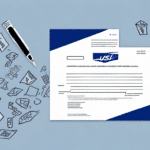What You Need to Know About Postal Insurance
As a business owner or an individual, shipping goods can be a daunting task. Imagine sending expensive or valuable items, only for them to get lost or damaged in transit. That's why it's essential to consider purchasing postal insurance for your packages. Postal insurance is an excellent way to protect your shipments, reduce potential losses, and restore peace of mind.
Understanding Postal Insurance: A Complete Guide
Postal insurance is a form of protection offered by the United States Postal Service (USPS) to cover physical damage, theft, or loss of your shipments during transit. Covered losses may include items stolen, damaged in transportation, or lost. It's important to note that postal insurance is separate from shipping fees or the cost of the package contents.
When shipping valuable or fragile items, purchasing postal insurance is highly recommended to ensure protection in case of any mishaps during transit. The cost of postal insurance is based on the declared value of the package and can be purchased at the time of shipping.
Not all items are eligible for postal insurance. Items such as perishable goods, hazardous materials, and live animals are typically excluded from coverage. Additionally, there are limits to the amount of coverage that can be purchased for certain items, such as jewelry and artwork. It's crucial to check with the USPS to determine if your items are eligible for coverage and to understand the coverage limits.
How Postal Insurance Works: Everything You Should Know
To purchase postal insurance, you have two options: buy it online or in person at your local post office. When shipping your package, inform the postal clerk that you wish to insure your shipment and declare the value of the package to qualify for insurance.
Premiums for postal insurance vary depending on the shipment's value and the method of delivery. For instance, Priority Mail includes a default $100 insurance policy, while domestic insurance value ranges from $50,000 to $0.45 per $100 above $300.
Postal insurance covers the value of the package but does not account for any sentimental or emotional value. Certain items, such as perishable goods, hazardous materials, and cash, cannot be insured. Always double-check the list of prohibited items before shipping your package. In case of loss or damage, you can file a claim with the USPS and receive compensation for the insured value of your package.
Types of Postal Insurance: Which One is Right for You?
The USPS offers different types of insurance options, including Priority Mail Express, Priority Mail, and First-Class Mail. Priority Mail has a default minimum insurance of $100, while Priority Mail Express provides up to $100 of insurance coverage.
Additional insurance coverage options are available for both domestic and international shipments, such as Registered Mail and Insured Mail. Registered Mail offers the highest insurance coverage of up to $50,000.
The cost of insurance varies depending on the value of the item being shipped and the level of coverage selected. For example, if you're shipping a valuable item worth $500, investing in additional insurance coverage ensures full protection in case of loss or damage during transit. It's always a good idea to carefully read the terms and conditions of each insurance option to fully understand what is covered and what is not.
Is Postal Insurance Worth the Cost? Here's What You Need to Consider
In most situations, postal insurance is worth the cost, especially when sending valuable items. However, it's essential to evaluate whether the insurance premium is justifiable based on the value of the item and the risk involved.
- How much does it cost to replace this item?
- How much will the insurance add to my shipping fees?
- Which shipping carrier is more likely to deliver the package safely?
Consider the destination of your package as well. If you're shipping to a location with a high risk of theft or damage, such as a busy city or a remote area, insurance may be a wise investment. Additionally, when shipping internationally, research the customs regulations and potential for lost or damaged packages in the destination country.
Some shipping carriers offer built-in insurance for certain types of packages or shipments. For example, USPS Priority Mail automatically includes $50 of insurance coverage, while carriers like FedEx and UPS offer additional insurance options for an added fee. It's advisable to compare the cost and coverage of these options before making a decision.
What Does Postal Insurance Cover? A Comprehensive List
Postal insurance covers damage, theft, or loss of your package during transit. Additionally, it covers costs associated with retrieving your package, such as postage costs and the recipient's correct address.
However, postal insurance does not cover items that are prohibited or restricted by law, such as illegal drugs or hazardous materials. It also excludes items that are not properly packaged or labeled, as this can increase the risk of damage or loss during transit. Always ensure that your items are properly packaged and labeled, and check with your postal service for any restrictions or limitations on what can be insured.
How to File a Claim for Postal Insurance: Step-by-Step Guide
If your package doesn't arrive or arrives damaged, it's essential to file a claim with the USPS. The process begins by visiting your local post office to obtain a claim form. You'll need to provide details of your package, such as the tracking number, the item's description, and the insured value.
After submitting the claim, you should receive a response within seven to ten business days. The response will provide information on the status of your claim and the next steps you should take.
Not all packages are eligible for postal insurance. Items like perishable goods or live animals are typically not covered by USPS insurance. Additionally, there are limits to the amount of insurance you can purchase for your package. Always check the USPS website for a full list of eligible items and insurance limits before purchasing insurance.
If your claim is denied, you have the option to appeal the decision. You can submit additional evidence or documentation to support your claim and request a review of the decision. Keep in mind that the appeals process can take several weeks, and there is no guarantee that your claim will be approved.
Top Tips for Getting the Most Out of Your Postal Insurance Policy
Maximize the benefits of your postal insurance policy by following these essential tips:
- Declare the Correct Value: Always declare the accurate value of your items when purchasing postage and mailing.
- Use Tracking: Opt for certified mail or a carrier that provides package tracking to monitor your shipment's progress.
- Understand Terms and Conditions: Familiarize yourself with the terms and conditions of your postal insurance policy, including any restrictions or coverage limits.
- Keep Documentation: Retain all receipts and documentation related to your shipment in case you need to file a claim.
- Contact Your Provider: If you have any questions or concerns about your policy, don't hesitate to contact your insurance provider for clarification.
Common Mistakes to Avoid When Buying Postal Insurance
Avoid these common pitfalls when purchasing postal insurance:
- Incorrect Value Declaration: Failing to declare the accurate value of your package can prevent you from obtaining the right insurance coverage.
- Ignoring Coverage Limitations: Not checking for limitations on coverage, such as restricted items or shipping destinations, can lead to denied claims.
- Confusing Liability Coverage with Postal Insurance: Liability coverage provided by carriers only covers their responsibility for lost or damaged packages, whereas postal insurance covers the full value of the package and must be purchased separately.
- Not Comparing Insurance Options: Different carriers offer varying insurance options and rates. It's crucial to compare and choose the best option for your needs.
Alternatives to Postal Insurance: Exploring Your Options
If you're looking for other ways to protect your packages beyond postal insurance, consider the following alternatives:
- Self-Insuring: Create an emergency fund to replace lost or damaged packages without relying on insurance.
- Credit Card Protection: Some credit card companies include shipping protection services for their customers, offering additional coverage for your shipments.
- Private Shipping Carriers: Use carriers like UPS or FedEx, which offer their own insurance options with higher coverage limits and more flexible terms than the USPS.
Always compare the costs and benefits of these alternatives to determine the best protection strategy for your shipments.
Best Practices for Shipping Valuable Items with Postal Services
When shipping valuable items with postal services, implement these best practices to ensure your possessions are protected:
- Secure Packaging: Use sturdy packaging and secure seals to prevent damage during transit.
- Opt for Tracking: Choose mailing options that include package tracking to monitor your shipment's journey.
- Purchase Insurance: Always insure valuable items to safeguard against loss or damage.
- Research Destination Regulations: Understand the specific regulations and restrictions of the destination country to avoid issues with customs.
- Accurate Declaration: Properly declare the value of the item on the customs form to prevent delays or complications with customs officials.
How to Save Money on Postal Insurance While Ensuring Adequate Coverage
Save on postal insurance costs without compromising coverage by following these tips:
- Ship During Off-Season: Shipping during less busy times can reduce insurance costs.
- Use a Consolidator: Consolidating shipments can lower overall insurance expenses.
- Utilize Flat-Rate Shipping: Flat-rate shipping options often include insurance at a lower cost compared to variable rates based on package value.
The Pros and Cons of Using USPS vs. Other Shipping Carriers for Your Insured Packages
When deciding between USPS and other shipping carriers for insured packages, consider the following pros and cons:
USPS
- Pros: More affordable rates for certain shipments, extensive service network, and convenient mailing locations.
- Cons: Slower delivery times compared to some private carriers and limited insurance options for high-value items.
Private Carriers (FedEx, UPS)
- Pros: Enhanced tracking capabilities, faster delivery times, and higher insurance coverage limits.
- Cons: Generally higher shipping and insurance costs.
Ultimately, postal insurance provides a cost-effective solution to protect your packages. By understanding both postal insurance and the offerings of different shipping carriers, you can ensure your valuable items are delivered safely and secure your peace of mind.






















